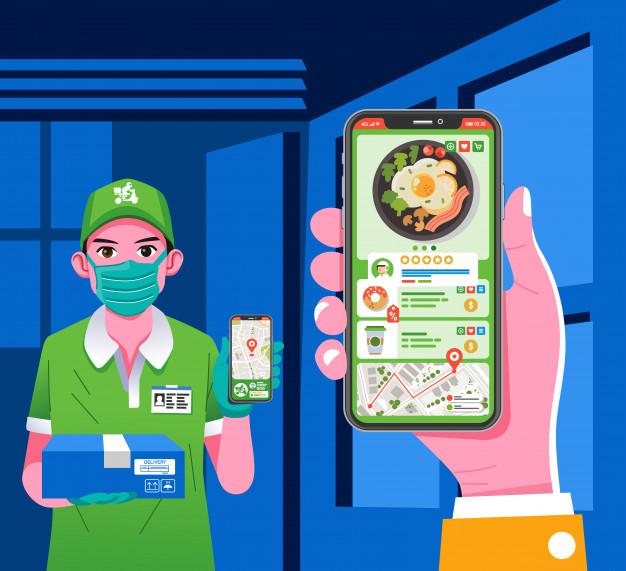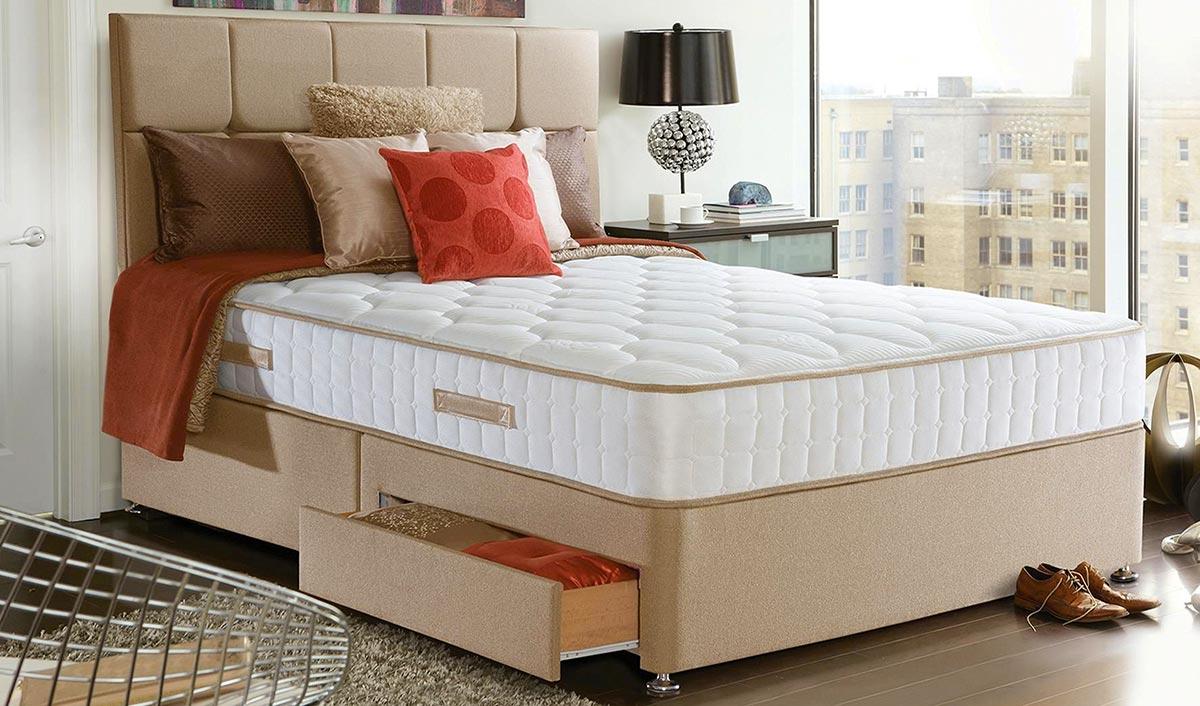
Marketplace models are bound to be information-centric and customer-centric business models of the future. It has shown to the world that you do not have to essentially own the service that you intend to provide customers. Uber has successfully demonstrated to the world that it can build a multi-billion dollar business in the cab industry without even owning a single car. The same logic and business model has promulgated itself across multiple service segments, and it has resulted in an app being available today for almost anything and everything!
One such offshoot of this revolution is the food delivery marketplace
The importance of food does not need any additional emphasis than it is already known. Several companies mediate between restaurants and users, providing them with restaurant food through delivery services where users can enjoy their favorite food in the comfort and confines of their homes. The food delivery business model, however, it’s not monotonous. Different types of models can work within the spectrum of food delivery.
The business models Food Delivery App
The order facilitator
This is the simplest business model as it involves only information and nothing more! The mobile app just lists the restaurants available in the locality And the menu of the restaurant. The user can place the order using the app, and the app notifies the restaurant of the customer order. The responsibility of delivering the order to the location of the customer falls on the restaurant.
The restaurant app
There are a few restaurants that are present in multiple locations, and some restaurants can afford to maintain a delivery fleet of their own. In that case, the restaurant can build an exclusive mobile app dedicated to that restaurant. Users can order only from that restaurant, and the delivery is taken care of by dedicated executives who work for that restaurant alone. It is a great idea if you have a specialty restaurant where users are likely to order in big numbers or if you have a chain of restaurants spread across multiple locations within a defined radius.
The aggregator plus logistics app
This is, by a distance, the most successful and profitable business model. The fact that almost every successful food delivery app follows this model is a resounding testimony to profitability. In this case, the app is not only responsible for listing the restaurant and the menu but also for delivering the food from the restaurant to the location of the user.
The biggest reason why this business model is successful is that the restaurant can focus on its core activity which is preparing food and packaging it. They do not have to spend additional time and money managing delivery executives. Also, it provides employment opportunities for a lot of gig workers. This model is also effective because the restaurant does not have to employ drivers who need to get paid even if there are no deliveries.
As an entrepreneur who looks at holistic profitability, it is highly recommended that you go for a food delivery marketplace that provides not only the information but also the logistical services. There are several existing players in the market but considering the global demand for restaurant food, the proliferation of restaurants in cloud kitchens, and the existing version that people have towards dining out after the pandemic, the market is still wide-open to accommodate new players.
The monetization avenues
We have talked about how the aggregator model is the most profitable and lucrative business model when it comes to the food delivery marketplace ecosystem. There are different avenues in which you can make your profit.
The easiest and the most straightforward way to make a profit is to collect a commission from the restaurant for facilitating an order. Your App, in essence, functions as an aggregate affiliate. You are facilitating an additional order for which the restaurant is liable to pay you a commission. The commission can be fixed as a percentage or can vary based on certain dynamics like the number of others, the price of the items, and some other aspects like the average distance between the location of the restaurant and the user.
You can collect a delivery charge from the users based on the distance and the size of the package. In case of additional demand, you can even charge a premium delivery fee from users during peak hours. You can charge the additional amount in case of rain, traffic, and any other condition that makes it mandatory for the user to pay that charge!
Just like any other mobile app, you can also post advertisements on your app through the platforms provided by Google and Apple. You can also host your own ads within the app by charging restaurants for preferred listings on top of search results and even banners for restaurants that look to engage customers or enhance visibility.
Our Features of Our UberEats Clone App
For a food delivery marketplace app to function properly, you will need different apps for the users, the restaurants, and the delivery executives. Overseeing all The activities happening on the app is the administrator.
User app
The user should be able to sign up easily without any hassle, either by using that email address or phone number or by using legacy credentials like Google and Facebook.
The user should be able to make payments without any hassle, for which the app should be integrated with a versatile payment gateway that can accept payments from multiple payments monthly credit cards, debit cards, Internet banking, and wallets.
The user should be able to search and filter restaurants based on either the dish or the restaurant name or by the cuisine that they want.
The GPS should come into play, letting the user know the estimated delivery time and also in showing the movement of the delivery package from the restaurant towards their home.
The user should be able to review the restaurant based on the food and the delivery experience.
If possible, the user should have a loyalty program that helps them accumulate points and redeem them for a price discount.
A review and rating system needs to be in place for the user to share their experience with the restaurant and the delivery executive.
Restaurant app
A restaurant looks at the food delivery segment as an additional outlet and an avenue for revenue. The food ordering app should be designed in such a way that it makes it easy for restaurants to handle the operations and track the revenue.
The restaurant should be provided with a panel using which they can easily upload their menu and the prices. If possible, the restaurant should also be able to upload images of the menu items.
The restaurant should have the power to accept or reject orders based on their capacity inconvenience.
The management interface for the restaurant should also be available on the web interface, so it is easier for them to manage. The communication should be flawless between the mobile app and the web interface.
As restaurants look at food delivery as an extension of their revenue-generating mechanisms, the payments made to the app through digital payment methods should be quickly credited to the bank account of the restaurant.
Delivery executive app
The delivery executive can be considered one of the most important elements in the on-demand ecosystem. In most cases, they are gig workers who look to earn additional revenue by participating in such gigs.
The delivery executive should be able to easily sign up for the services, but they should also go through an identity verification/authentication process.
They should have the facility to toggle their availability and also reject/accept orders.
The revenue tracking and earning history should be transparent for the gig worker. They should be able to quickly credit their earnings to their bank account.
The GPS should assist the executive in precisely reaching the location of the user.
Administrator interface
The administrator is responsible for the overall health of the app and its proper functioning.
- The administrator should be provided with a dashboard that gives them a snapshot of all the important statistics regarding the app including but not limited to the total number of active orders, the number of active delivery executives, and the total revenue earned for a particular time.
- The administrator should have control over the contents of the app/web interface. They should be able to design promotions and discounts applicable across the entire app.
- They should have the power to enable/disable users/restaurants/executives based on their behavior. They should be able to handle anything that can be considered detrimental to the app and its brand image.
- They are responsible for customer support. If needed, they can delegate customer support to a dedicated team.
- They should be able to set commission rates and delivery charges based on market dynamics.
Conclusion
The possibility of profitability with a food delivery marketplace has been established beyond any iota of doubt. It is only natural that an aspirin entrepreneur would want to venture into this space of food delivery on-demand marketplaces. To build an app from scratch would be quite a cumbersome and daunting affair.
If we were to look at the skeletal structure, The framework of a food delivery app like a tomato is almost similar to any other on-demand food delivery app. This opens up opportunities for you to use white label solutions, especially clones of apps like UberEats.
An UberEats clone script is easy to customize and can be made to bear features and visual elements of your choice. All that is left for you to do is to get in touch with the company that specializes in UberEats clone app development and customization. They will take it to understand your requirement and provide you with a perfect food delivery marketplace solution that will launch you into the territory of profitability!
Also read about:
What You Need to Know About the AWS DOP C01 Exam
How To Make Custom Cardboard Boxes Using Manual Methods
Where to Get Custom Printed Gift Boxes










More Stories
3 recommendations on Managing Payroll Systems for brand spanking new Businesses
How can we enhance our business presence with custom packaging solutions
What is a security certification salary
Is Trademark Registration Compulsory For E Commerce Companies
Choosing a Road Freight
The most effective method to Build a Home Music Studio in a Garden Log Cabin